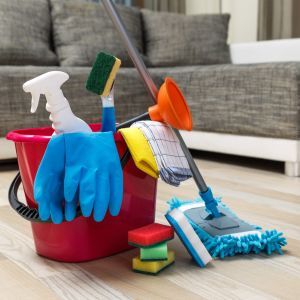Electrostatic vs Traditional Mops: Which Is Better for Commercial Cleaning?
Choosing the right mop for your commercial business isn’t just about cleaning the floor—it’s about boosting hygiene, efficiency, and cost-effectiveness. Two of the most common options for commercial environments are electrostatic mops and traditional mops, but which one truly stands out for New Zealand workplaces?
In this blog, we compare electrostatic and traditional mops head-to-head to help facility managers, cleaners, and business owners make informed decisions about their cleaning tools.
What is a traditional mop?
A traditional mop typically refers to cotton string mops or sponge mops used with water and cleaning chemicals. These mops are widely used for wet mopping floors, particularly where there is visible dirt or spills.
While they can effectively clean heavy messes and sanitise surfaces when paired with disinfectants, they also come with drawbacks like dripping, heavy buckets, and the risk of cross-contamination if not used properly.
What is an electrostatic mop?
An electrostatic mop is a dry mop made with synthetic fibres that build static electricity as the mop moves. This electrostatic charge attracts dust, allergens, and debris without requiring water or cleaning solutions.
They’re ideal for dry sweeping and dust control and are widely used in offices, schools, healthcare facilities, and other commercial spaces focused on cleanliness and efficiency.
If you're looking to learn more about how electrostatic mops work and why they’re becoming a go-to for Kiwi businesses, check out our blog: What Is an Electrostatic Mop and Why Are NZ Businesses Using Them?.
Head-to-head comparison: Electrostatic vs Traditional mops
| Feature | Electrostatic Mop | Traditional Mop |
| Best Use | Dry dusting, allergen removal | Wet cleaning, sanitising surfaces |
| Cleaning Method | Static electricity attracts dust | Manual scrubbing with water/chemicals |
| Chemical Use | None required | Typically required |
| Dry Time | No drying needed | Can leave floors wet/slippery |
| Ease of Use | Lightweight, no bucket needed | Heavier, requires water bucket |
| Hygiene | Reduces airborne particles | Risk of cross-contamination |
| Eco-Friendliness | Highly eco-friendly | Higher water and chemical usage |
| Noise Level | Silent | Moderate (splashing, wringing) |
| Floor Safety | Safe for wood, laminate, dry zones | Ideal for hard, sealed surfaces |
Which mop is better for your business?
Choose electrostatic mops if you need:
-
Dust and allergen control in offices, schools or aged care
-
Fast, silent daytime cleaning with minimal disruption
-
Eco-friendly cleaning without harsh chemicals
-
Safe dry cleaning for wood or sensitive flooring
Choose traditional mops if you need:
-
Heavy-duty cleaning for spills or greasy floors
-
Wet sanitisation in kitchens, bathrooms, or high-traffic zones
-
Disinfecting with commercial cleaning agents
In many cases, a combination of both is ideal—electrostatic for daily dust control and traditional mops for scheduled deep cleans. According to a 2022 study published in the International Journal of Environmental Research and Public Health, using dry cleaning tools such as electrostatic mops can significantly reduce airborne particulate matter and allergens in indoor spaces, making them highly effective for routine cleaning in sensitive commercial environments (source).
Why NZ businesses trust Insinc for cleaning supplies
At Insinc Products, we supply both electrostatic mops and traditional wet mop systems designed for commercial use in New Zealand. Whether you manage a retail store, aged care facility, or office complex, we can help you choose the right mop system for your environment.
Our team offers personalised support to ensure you get high-performing, long-lasting cleaning tools that meet your workflow and hygiene standards.
Final thoughts
Choosing between electrostatic and traditional mops depends on your facility’s needs, cleaning frequency, and hygiene goals. With the right tools from Insinc, you can optimise cleaning efficiency while maintaining a healthy, professional environment.
Need help choosing the best mop for your business? Contact Insinc for tailored advice and trusted commercial-grade options.
https://www.insinc.co.nz/page/149131/search/search-results.html?search_keywords=Electrostatic+mops
Posted: Monday 20 October 2025



